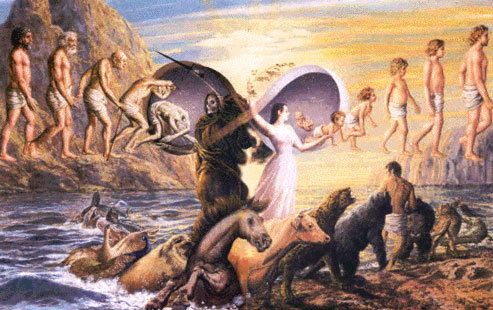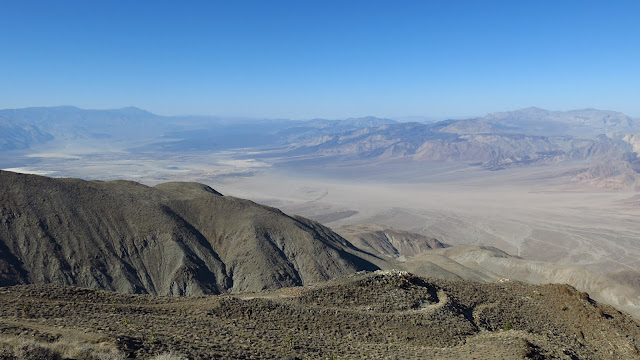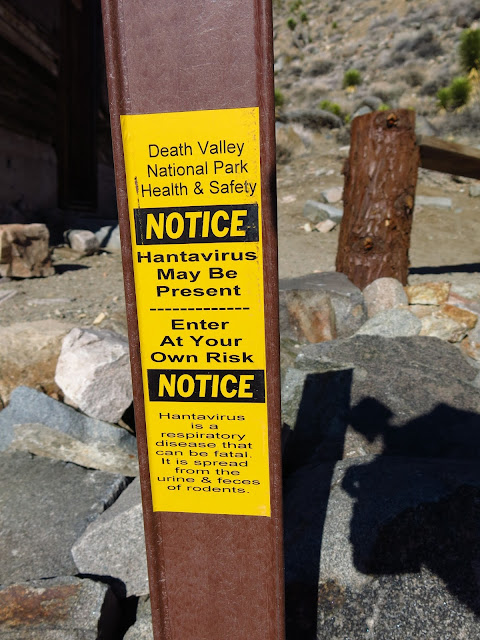Doing a little more research this time, I realized there was no road to the actual location. Perfect! It had been a while since my last hike and it felt great to get out again. Plus, I knew the site would be that much more secluded. It was about 2 miles of cross country travel through scattered Joshua Trees across Lee Flat, leading to the western escarpment of the Nelson range. Canyons wind their way down from the high rocky ridges, with dark, volcanic looking rocks gathered near the bottom flanks. One of these canyons had the mysterious petroglyhs we were looking for. But, which one?
Showing up extra prepared this time, we used a GPS to lead us right to the canyon holding Blackrock Well and its rock art. It would have been easy to spot, but I wasn't taking any chances this time! There was one particular canyon where Mother Nature had gathered the areas prize collection of dark-colored, clean, granitic boulders that native people discovered made a perfect parchment for their artwork. The drawings are enigmatic and one can't help but wonder what story they are trying to tell, but the details are lost to time. However, some things were clear. Big Horn Sheep and the Snake were obvious co-inhabitants in this land long ago, as they figured prominently in many of the drawings. Occasionally a figure of either a warrior, or hunter, would appear. Sun bursts would appear, giving hints the desert could get just as hot then, as now.
After taking an extended hike further up-canyon and taking lots of photographs, we trekked back across Lee Flat, hopped in the 4Runner and headed over to the excellent camp site I found last time I was here. Rebeca made a yummy back country dinner, which you can read about here. It was delicious! The dogs were so relaxed, as they hung out nearby in the vehicle. They had the most amazing expressions of serene contentment I had ever seen. Clearly, they needed a good hike too!
Next up, waiting, followed by a little more waiting. We didn't mind. It always feels nice to soak in the desert surroundings. We were waiting to try out some timelapse photography on the sunset, followed my some photos of the night sky. The sunset wasn't spectacular, but the timelapse still came out pretty decent. The clouds were very cool. They appeared stationary in real time, so it was neat to see all the hidden movement come alive in the video! I also took an hour's worth of exposures every 60 secs to put together one of my first star trails photo and an accompanying timelapse. I didn't get the intervals quite short enough, though. So, overall, nothing spectacular, but good stuff for a first try.
 |
| Lee Flat Sunset |
 |
| Orion Rising |
 |
| Cosmic Spin Cycle |
Our timelapse vidoes are available on Vimeo and embedded below.
We just ordered a new dSLR, which should really improve the landscape and night scape photos. A Canon EOS 6D with a Sigma 20mm f/1.8 Wide Angle lens. Cant' wait to try it out on an upcoming trip!
I think we got hooked on the petroglphys too. There are many other secluded sites in Death Valley that are not well known and would also be very cool to visit. So much to explore!
Smugmug Photo Album - Blackrock Well Petroglyphs, Lee Flat Sunset n Nightscapes





























































